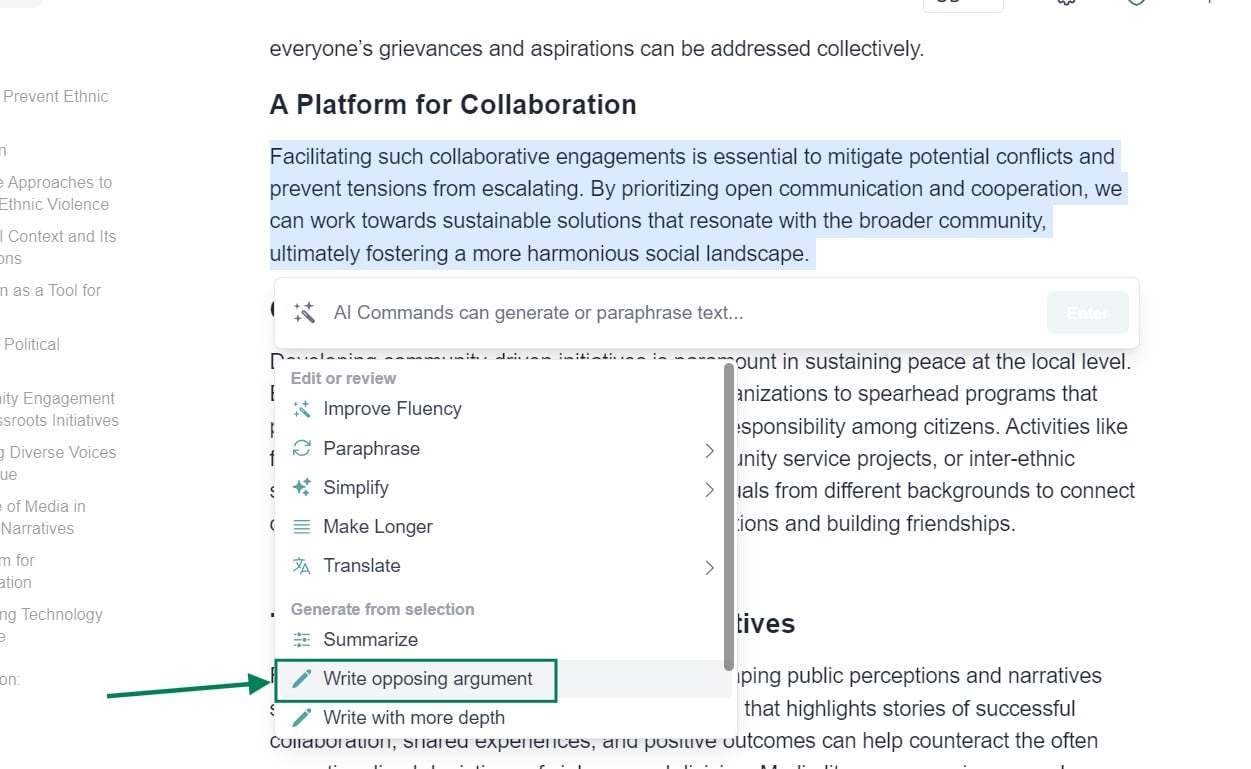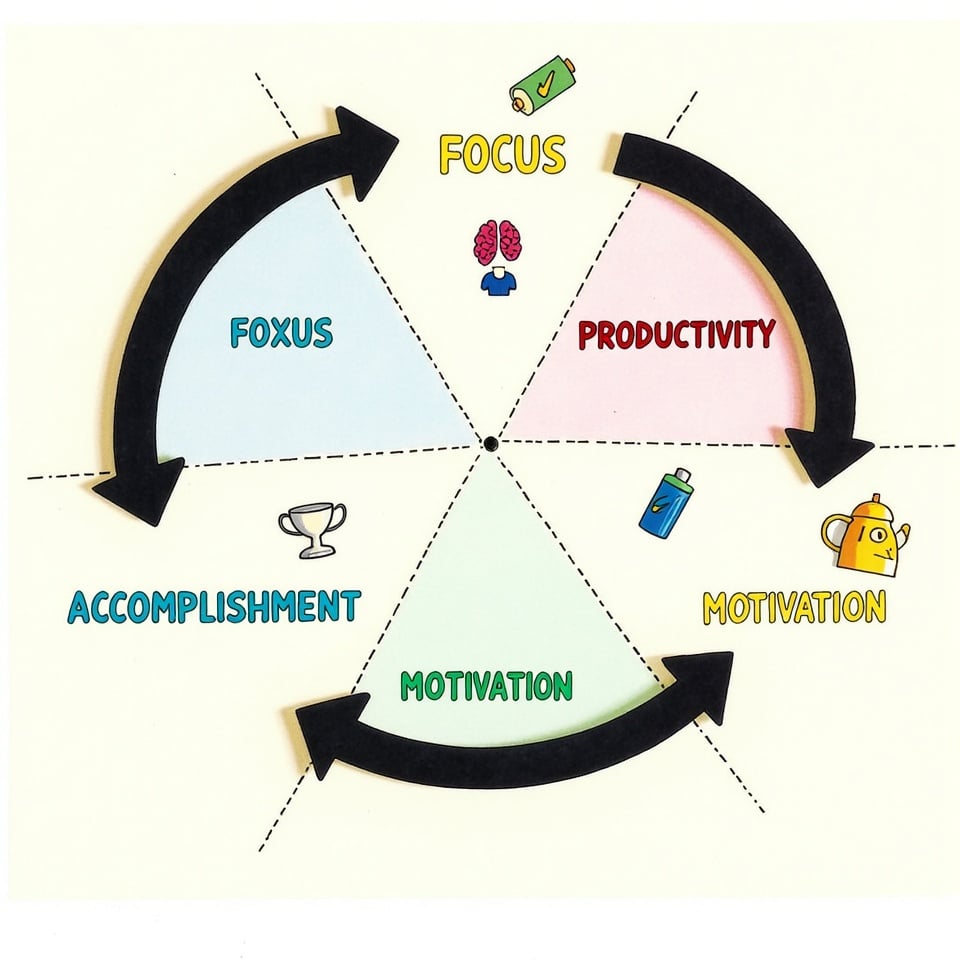A position paper is a concise and informative document that presents a clear argument or stance on a specific issue or topic. Also known as a policy brief or a stance paper, it aims to persuade readers to adopt a particular point of view or take a specific action.
Whether used in academic, business, or government settings, a well-crafted position paper is an effective tool for communicating complex ideas, influencing public opinion, and driving decision-making.
In this article, we’ll explore the ins and outs of a position paper, its key components, and provide tips for writing a compelling and effective position paper.
Table of Contents
What is a position paper?
A position paper is a written document that clearly states your viewpoint or stance on a particular issue, explains why you hold that view, and provides evidence to support your claims.
A position paper is like a roadmap of your argument, guiding readers through your thought process and the reasoning behind your opinion. It’s a concise and structured way to present your perspective, making it easier for others to understand and engage with your ideas.
By writing a position paper, you’re not just expressing your opinion; you’re also demonstrating your critical thinking skills, research abilities, and effective communication style.
How to write a position paper in 5 simple steps
Writing a position paper can seem daunting, but breaking it down into manageable steps makes the process much easier.
Here’s a step-by-step guide to help you get started:
Step 1: Choose a Topic
Pick an issue that sparks your interest and passion. Make sure it’s specific, relevant, and manageable. A good topic should be concise, yet allow for in-depth exploration.
Ask yourself:
- What problem do I want to address?
- What question do I want to answer?
Step 2: Conduct Research
Dive into the world of information and gather facts, statistics, and expert opinions related to your topic.
Read books, articles, and online resources.
Talk to people with different perspectives and experiences. Take notes, organize your thoughts, and get a feel for the complexities of the issue.
Step 3: Write a Thesis
Craft a clear and concise statement that summarizes your position on the topic. Your thesis should be specific, focused, and arguable. It’s the backbone of your position paper, providing direction and purpose.
Ask yourself:
- What’s my main argument?
- What do I want to prove?
Step 4: Challenge Your Thesis
Play devil’s advocate and test your thesis against opposing views. Anticipate counterarguments and be prepared to address them. This step helps you strengthen your argument, identify potential weaknesses, and develop a more nuanced understanding of the issue.
Step 5: Collect Supporting Evidence
Gather credible sources to back up your claims and demonstrate the validity of your thesis. Use statistics, expert opinions, personal anecdotes, and historical examples to build a strong case. Make sure your evidence is relevant, reliable, and accurately cited. This final step helps you build a convincing argument and persuade your readers.
Position paper outline
A clear and organized outline is essential for writing a strong position paper.
Here’s a suggested outline to help you structure your ideas:
I. Introduction
- Hook: Grab the reader’s attention with an interesting fact or quote (Try our free hook generator)
- Background information: Provide context and an overview of the topic
- Thesis statement: Clearly state your position on the issue
II. Argument 1: Main Point
- Topic sentence: Introduce your first main point
- Evidence: Provide supporting facts, statistics, or expert opinions
- Analysis: Explain and analyze the evidence
- Linking sentence: Connect your main point to the next argument
III. Argument 2: Additional Point
- Topic sentence: Introduce your second main point
- Evidence: Provide additional supporting facts, statistics, or expert opinions
- Analysis: Explain and analyze the evidence
- Linking sentence: Connect your main point to the next argument
IV. Counterargument and Refutation
- Acknowledge the opposing view: Recognize the counterargument
- Refute the opposing view: Provide evidence and analysis to counter the opposing view
V. Conclusion
- Restate thesis: Summarize your main argument
- Summarize main points: Recap your key arguments
- Final thought: Leave the reader with something to think about
VI. References
- List your sources: Provide a bibliography or reference list of the sources you used in your research.
Position paper example
Position Paper Example: Should Schools Start Later?
Introduction
As the alarm clock blares at 6:00 AM, many students groggily get out of bed, already feeling behind on their day. The American Academy of Pediatrics recommends that teenagers get 8-10 hours of sleep each night, but many schools start before 8:00 AM, making it difficult for students to get the sleep they need. As a result, I firmly believe that schools should start later, at 9:00 AM.
Argument 1: Improved Academic Performance
Studies have shown that sleep deprivation can significantly impair cognitive function, leading to decreased academic performance. By starting school later, students will be more alert and focused, allowing them to absorb and retain information more effectively. For example, a study by the National Sleep Foundation found that students who got 9 hours of sleep each night had better grades and attendance than those who got less sleep.
Argument 2: Better Mental Health
Sleep deprivation can also have serious consequences for mental health, including increased risk of depression, anxiety, and suicidal thoughts. By giving students an extra hour of sleep, we can help them develop healthier habits and reduce the risk of these serious mental health issues. According to the National Alliance on Mental Illness, 1 in 5 teenagers experience mental health issues, and sleep deprivation can exacerbate these conditions.
Counterargument and Refutation
Some may argue that starting school later will interfere with after-school activities and sports. However, many schools have already successfully implemented later start times without sacrificing extracurricular activities. In fact, some schools have even seen an increase in participation in sports and clubs due to the later start time.
Conclusion
In conclusion, starting school at 9:00 AM is a simple yet effective solution to improve academic performance, mental health, and overall well-being of students. By giving students an extra hour of sleep, we can help them succeed in school and beyond. It’s time for schools to wake up to the benefits of a later start time.
References
- American Academy of Pediatrics. (2015). School Start Times for Adolescents.
- National Sleep Foundation. (2019). Sleep and Academic Performance.
- National Alliance on Mental Illness. (2020). Mental Health in Schools.
Tips for writing a position paper
Writing a position paper can be a challenging task, but with these tips, you’ll be well on your way to crafting a clear, concise, and persuasive argument.
1. Know Your Audience
Understand who your readers are and tailor your language, tone, and arguments to their needs and concerns. Are you writing for a general audience or a specific group of experts?
2. Choose a Clear and Concise Topic
Select a topic that is specific, relevant, and manageable. Avoid broad or vague topics that are difficult to cover in a single paper.
3. Develop a Strong Thesis Statement
Craft a clear and concise thesis statement that summarizes your position on the topic. Your thesis should be specific, focused, and arguable.
4. Use Evidence to Support Your Argument
Gather credible sources to back up your claims and demonstrate the validity of your thesis. Use statistics, expert opinions, personal anecdotes, and historical examples to build a strong case.
5. Anticipate Counterarguments
Consider opposing views and be prepared to address them. This will help you strengthen your argument, identify potential weaknesses, and develop a more nuanced understanding of the issue. You can use Blainy’s opposing argument writing feature to quickly generate opposing views.

6. Organize Your Thoughts
Use a clear and logical structure to organize your ideas. Divide your paper into introduction, body paragraphs, and conclusion.
7. Use Clear and Concise Language
Avoid using jargon or overly technical language that may confuse your readers. Use simple, straightforward language to convey your ideas.
8. Edit and Revise
Carefully review your paper for grammar, punctuation, and spelling errors. Revise your paper to ensure that your arguments are clear, concise, and well-supported.
9. Use Transitions and Connections
Use transitional words and phrases to connect your ideas and paragraphs. This will help your paper flow smoothly and make it easier to follow.
10. Get Feedback
Share your paper with others and ask for feedback. Use their comments and suggestions to improve your paper and strengthen your argument.
Position paper vs. argumentative essay
While both position papers and argumentative essays aim to persuade readers to adopt a particular point of view, there are key differences between the two.
Position Paper:
A position paper is a type of essay that presents a clear and concise argument on a specific issue or topic. Its primary purpose is to inform and persuade readers by providing a balanced and well-supported argument.
- Typically shorter than an argumentative essay (2-3 pages)
- Focuses on presenting a clear and concise argument
- May acknowledge counterarguments, but does not necessarily address them in-depth
- Often used in business, government, and academic settings to present a position on a specific issue
Argumentative Essay:
An argumentative essay is a type of essay that requires a more in-depth and detailed argument on a specific topic. Its primary purpose is to persuade readers by presenting a well-supported and well-reasoned argument.
- Typically longer than a position paper (4-6 pages)
- Focuses on presenting a detailed and well-supported argument
- Requires a more in-depth analysis of counterarguments and a clear refutation
- Often used in academic settings to develop critical thinking and writing skills
Key Differences:
- Length: Position papers are typically shorter than argumentative essays.
- Depth of analysis: Argumentative essays require a more in-depth analysis of the topic and counterarguments.
- Purpose: While both aim to persuade readers, position papers focus on presenting a clear and concise argument, whereas argumentative essays aim to develop a more detailed and well-supported argument.
- Tone: Position papers tend to be more formal and objective, whereas argumentative essays can be more persuasive and emotive.
FAQs
What is in a position paper?
A position paper typically includes:
- A clear and concise thesis statement that summarizes the main argument
- An introduction that provides background information and context
- Body paragraphs that present evidence and arguments to support the thesis
- A conclusion that summarizes the main points and reiterates the thesis
- References or citations to credible sources
What is MUN position paper?
A MUN (Model United Nations) position paper is a document that outlines a country’s stance on a specific issue or topic being discussed at a Model United Nations conference. It is typically written from the perspective of a country’s delegate and aims to persuade other delegates to adopt a particular position or resolution.
What are the three parts of a position paper?
The three main parts of a position paper are:
- Introduction: Provides background information, context, and a clear thesis statement.
- Body: Presents evidence, arguments, and analysis to support the thesis.
- Conclusion: Summarizes the main points, reiterates the thesis, and provides a final thought or call to action.
What best describes a position paper?
A position paper is best described as a clear and concise document that presents a well-supported argument on a specific issue or topic. It aims to inform and persuade readers by providing a balanced and well-reasoned argument, and is often used in academic, business, and government settings to present a position on a particular issue.







